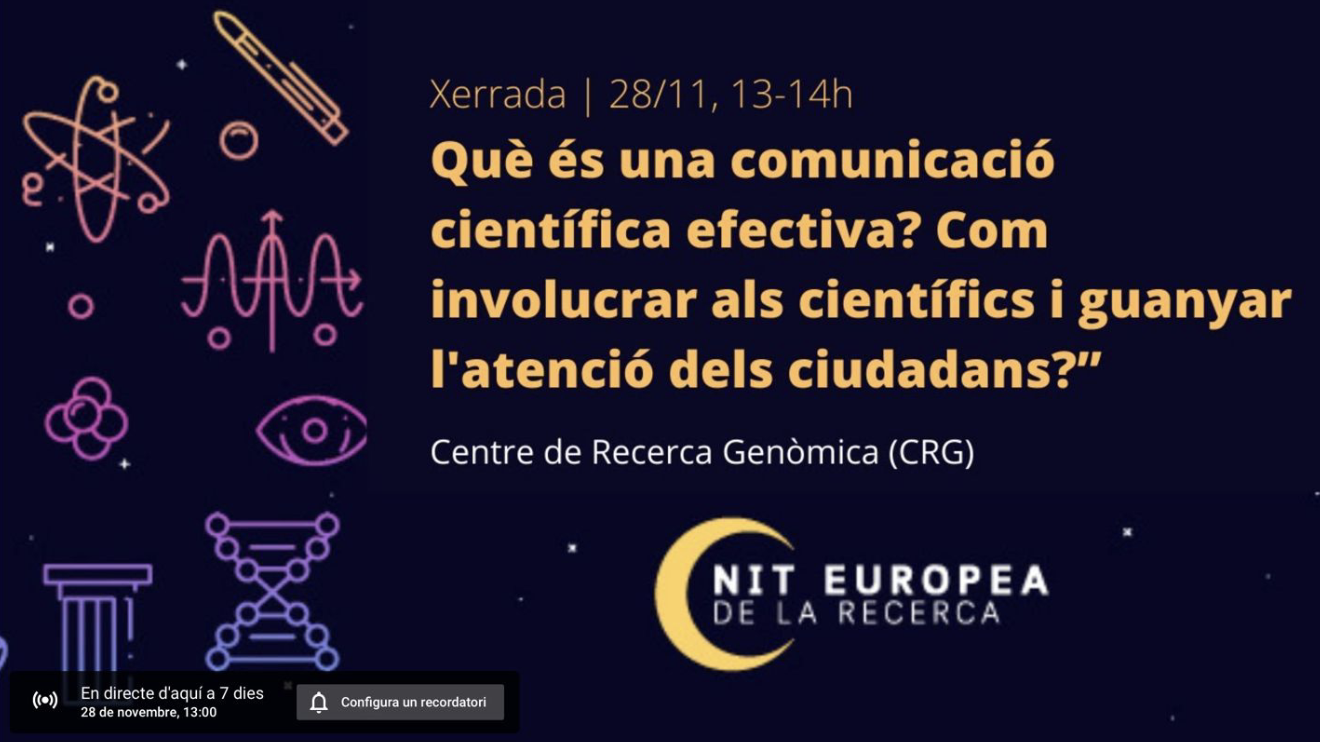Blog
See all posts22/07/2022 - Outreach
ChromDesign @ Biosummit 2021 or How to present at an online conference almost at midnight without falling asleep
As described in the Biosummit’s website, a yearly conference usually hosted at MIT in Boston by the Community Biotechnology Initiative at the MIT Media Lab, «A space for the global community of DIY biologists / community biologists / biohackers / biomakers and members of independent and community laboratories to convene, plan, build fellowship, and continue the evolution of our movement.»
On the 21st of November 2021, I had the pleasure to join a wonderful panel called community talks in the Science Communication Track of the Conference.
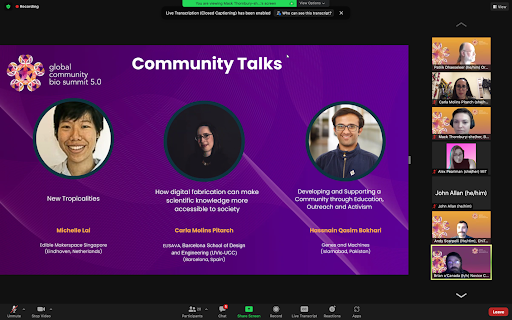
I kicked off my talk with a question: How can digital fabrication make science more accessible? I posed a general issue and a specific one as well. The general issue is that some scientific ideas are challenging to represent some concepts are complex to visualize, even for scientific communities. The specific one is the communication of some of those abstract concepts in a tangible world, so let’s focus on how digital fabrication can help us.
Even though it’s been long already since the pandemic started, this talk made me reflect on some actions from more than a year ago and how they affect how I do things now.
For that reason, I’ll visually show the journey since I got a 3D printer to explore as a hobby to how it ended up being a vital tool for finding a new way to visualize the genome in 3D.
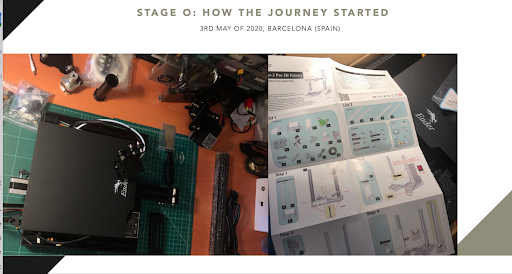
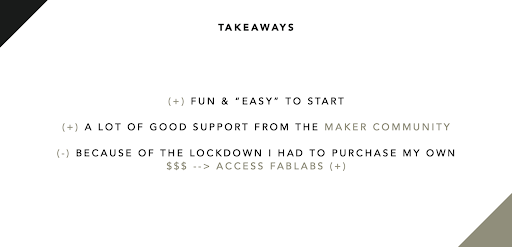
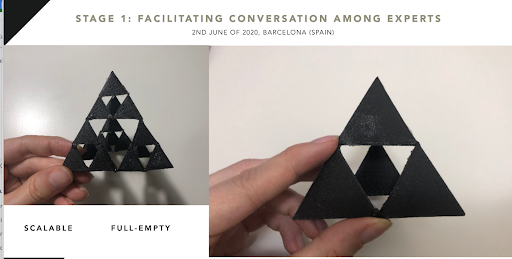
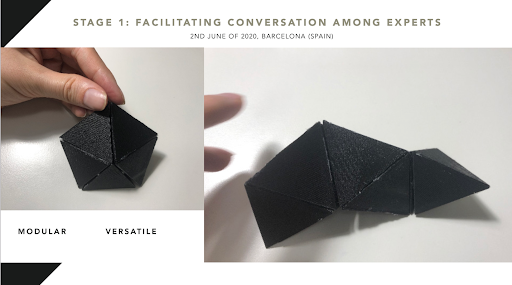
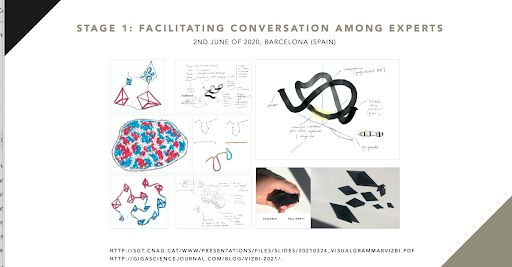
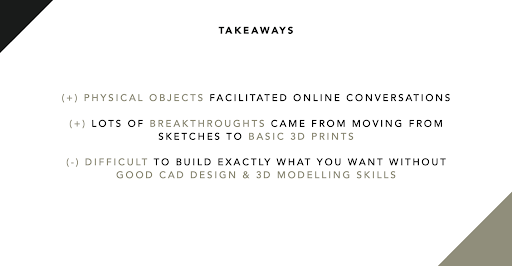
In the end, the outcome of this physical exploration ended up being a strong bond with the collaboration I had with Marc Martí-Renom together with 3 Elisava students: Yolanda Justicia, Santi Bonet, and Clementina Altube. This work was presented at Vizbi 2021, and Chris Armit
summarized our work at Http://gigasciencejournal.com/blog/vizbi-2021/.
Towards this end, Marc has teamed up with a design team at ELISAVA – Barcelona School of Design and Engineering (Carla Molins, Santiago Bonet, Yolanda Justicia, and Clementina Altube) to generate a simplified 3D grammar for multi-scale features observed in 3D genomic experimental data. There is a beautiful minimality in what Marc is proposing – loops are presented as lines, TADs as pyramids, compartments as extruded quadrilaterals, and chromosomes approximates to spheres (Figure 1). This provides the much-needed visual framework to allow researchers to know the detail of resolution that they encounter. Furthermore, Marc presented a highly impressive movie that showcased the relatively smooth transition from chromosome-level through to loop-level graphical representations (Movie 2).
If you’re interested, you can check all-conference slides here: Http://sgt.cnag.cat/www/presentations/files/slides/20210324_visualgrammarvizbi.pdf
After all, I couldn’t be happier of how far we got since I print very rudimentary octahedrons one evening.
After this successful outcome, I kept showing my journey with digital fabrication, and I just wanted to highlight one rough prototype that was a super hit, and I want to leave it here.
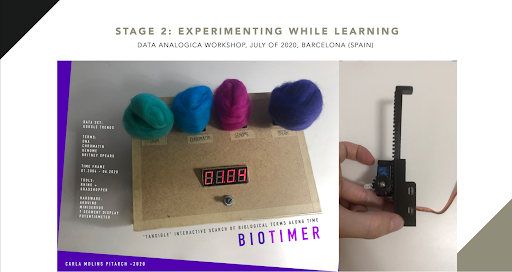
Check 2:32-2:41 for another conference video ( Digital Futures World – Data Analógica) to see the prototype in action. https://www.youtube.com/watch?v=TsRcOq_5958
Last but not least, I would like to show the enormous support I got from the community. Even though it’s the second year I have attended this event online, I could feel very close to some of the participants, and I’d like to share some gratitude towards such a wonderful group of people!
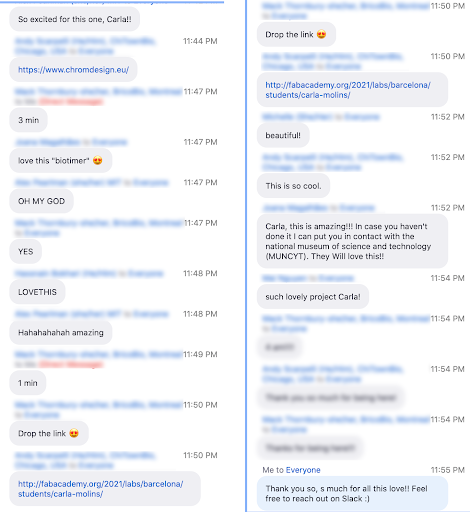
All conference talks will be public soon, and as soon as I have the link I’ll share it. Thanks for following my journey ☺
Biosummit’s proceedings are TBD soon


